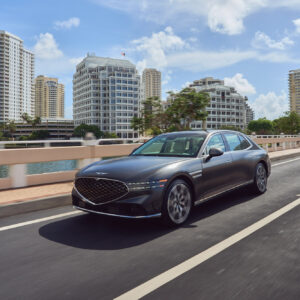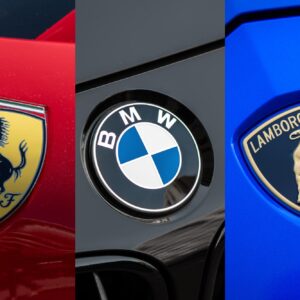Audi’s founder is August Horch. His brand went through a lot of trials and tribulations before it became the name we know today. These included company mergers, financial difficulty, and several ownership transfers.
Horch’s Early Beginnings
Before he founded the company, Horch graduated with a degree in engineering and discovered that he had a talent for engine building. He worked for Karl Benz until he left this company in 1899 to make his own brand. Horsch’s first automobiles were named Horch & Cie Motorwerkes or Horch for short.

Renamed to Audi
Five years later, differences between him and the company’s directors forced him to leave and start a new company. Since Horch wasn’t allowed to reuse his old company’s name, a business partner’s son recommended using his name’s Latin translation. And thus, Audi was born in 1910.
What does Audi stand for? Since Audi is the Latin translation of the Horsch name, it roughly translates into “listen” in German.
German Companies Merge
During the early 1900s, many new brands were founded to produce motorbikes and vehicles. Some of these brands included DKW and Wanderer. The former was one of the largest manufacturers of motorcycles and various vehicle parts. The latter made bicycles, motorcycles, and eventually vehicles.
Tensions during World War I and economic predictions led to DKW spearheading a consolidation plan together with many other small German automakers. DKW acquired Audi in 1928, and then Horch and Wanderer in 1932. These four manufacturers were called Auto Union.
The Story of the Logo
When the four companies merged, they needed a new logo. Four circles perfectly reflected the freshly joined brands, with each circle reflecting an individual brand. These rings overlapped in a Venn diagram style and the letters “Auto Union” were spelled out in the middle of the four rings.
Despite the merger, each company still made vehicles with the logos of their original companies. The intersecting circles logo was only used to represent the newly merged Auto Union brands, not the vehicles produced by each company. This wasn’t an issue because each brand catered to a specific market segment. Nevertheless, the merger allowed Auto Union to create a range of models while sharing components and production resources.
But during World War II, three of the four companies encountered serious sales issues.
Daimler-Benz Acquires Auto Union
Of the four brands, only DKW marketed new vehicles in the late 1940s. By the end of the 1950s, Auto Union had serious financial struggles. Daimler-Benz, a company group that would eventually evolve into Mercedes-Benz, acquired Auto Union in 1959.
Volkswagen Acquires Auto Union
Daimler-Benz immediately realized that the Auto Union brands weren’t profitable. Thus, Auto Union was sold to Volkswagen in 1965. Despite comprising one of the four Auto Union companies, an Audi vehicle hadn’t rolled out of a factory in more than 20 years.
Before selling Auto Union to Volkswagen, Mercedes invested in DKW to develop a new four-stroke engine. Once Volkswagen acquired Auto Union and DKW, it recognized that this new engine technology was the future. It immediately put the new engine in the last vehicle DKW made–the F102.
The Final Audi Rebranding
The F102 was immediately rebranded as Audi to set it apart from the DKW name. They also used the Auto Union logo, removing the Auto Union label, and solidifying Audi’s logo, which Audi uses until now. The F102 proved to be a turning point because of its new technology, making it a commercial success. In 1968, the Audi 100, a luxury midsize sedan, was released, marking a new era because it wasn’t based on DKW technology.
Progress Through Technology
Audi coined its famous marketing slogan “Vorsprung durch Technik,” which means “progress through technology.” This slogan perfectly embodied the Audi brand. Many of its succeeding models, like the Audi 80 and Audi 200, stayed true to this motto. Audi’s succeeding vehicles featured a range of technological innovations like Quattro, which catapulted Audi into rally racing success.
Luxury Powerhouse
In the ’90s, Audi released the Audi A8, its first vehicle in the luxury car segment. This new model signified that it was shifting upmarket, going head-to-head with other German luxury brands like BMW andMercedes-Benz. It also introduced new manufacturing technology that utilized aluminum, making its vehicles lighter and more cutting-edge.
The A8 model spearheaded the model designations that we still know today. From here, Audi would introduce the subcompact A3, compact A4, and midsize A5 sedan models. Audi would also introduce the Audi Q3 and Q5, which are the brand’s SUVs. Audi’s sales would continue to increase over the years, reaching over 1.7 million units sold annually with the brand’s consistent additions to its product portfolio.
Any information provided on this Website is for informational purposes only and is not intended to replace consultation with a professional mechanic. The accuracy and timeliness of the information may change from the time of publication.


















